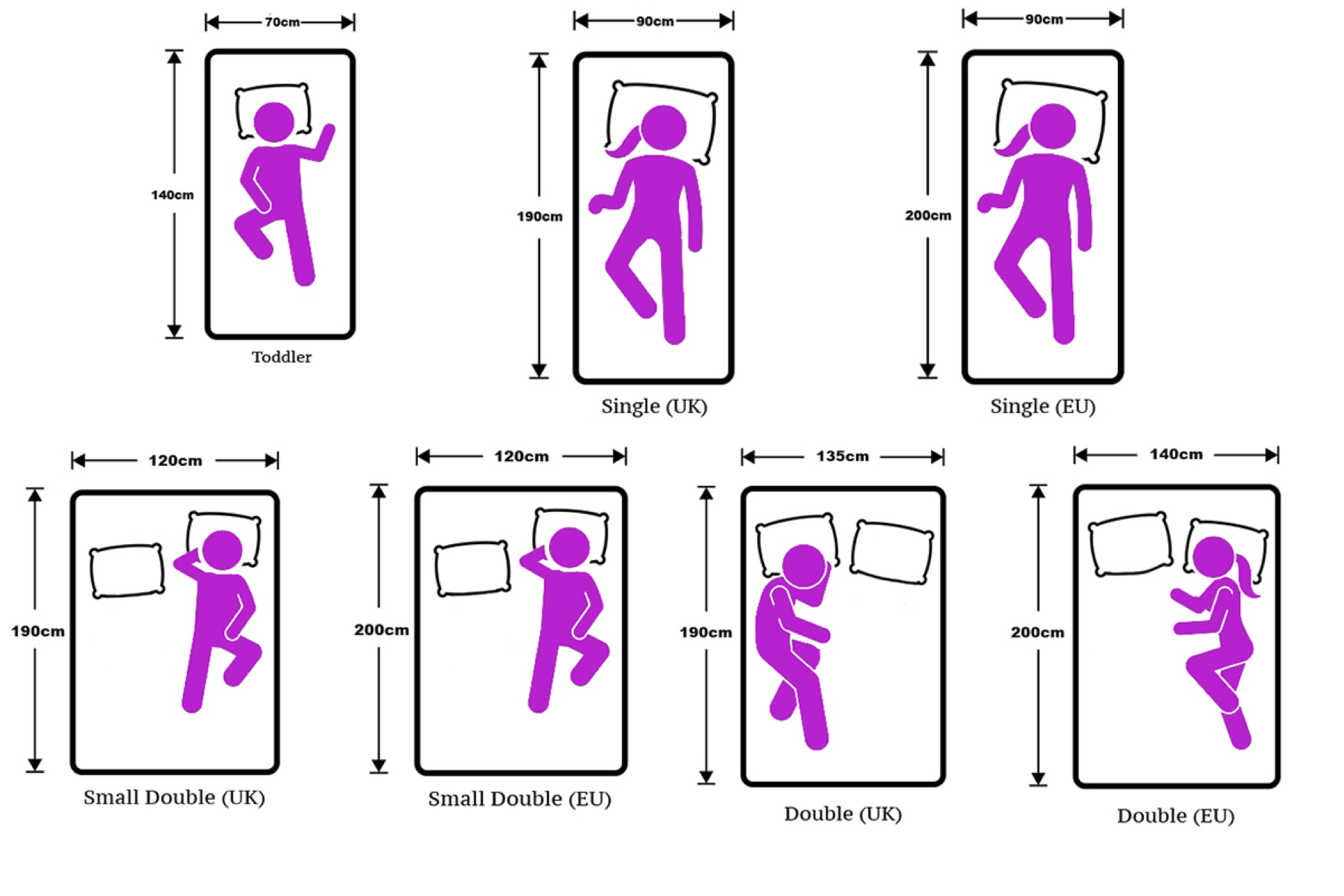What Age To Move From Toddler Bed To Single Bed? The ideal toddler bed transition age varies, but most children are ready between 2 and 3.5 years old. However, age isn’t the only factor; single bed readiness signs are just as important.
Moving your child from a toddler bed to a single bed is a big step. It’s a sign of growing up and achieving more independence. Figuring out the right time for this transition can feel tricky. This guide will walk you through everything you need to know, from single bed age recommendations to identifying when your child is truly ready.

Image Source: www.cuckooland.com
Figuring Out When It’s Time to Make the Switch
The shift from a toddler bed often coincides with several key developmental milestones and practical considerations. It’s a multi-faceted decision, not solely dictated by a number on a birthday card. Understanding these factors helps ensure a smooth and positive experience for your child.
Typical Toddler Bed Transition Age Range
While there’s no magic number, most children are ready to transition between the ages of 2 and 3.5 years old. This toddler bed to twin bed age range aligns with typical developmental leaps. It’s also often driven by practical needs, such as the arrival of a new sibling.
Reasons to Consider Transitioning From Toddler Bed
Several compelling reasons might prompt you to consider transitioning from a toddler bed to a single bed:
- Outgrowing the Toddler Bed: This is the most obvious sign. If your child looks cramped or uncomfortable in their toddler bed, it’s time to upgrade.
- Potty Training Success: Mastering potty training often goes hand-in-hand with increased independence and readiness for a bigger bed.
- Preparing for a New Sibling: If you need the toddler bed for a younger sibling, transitioning your older child beforehand minimizes feelings of displacement.
- Increased Independence: If your child actively expresses a desire for a “big kid” bed, it shows they are ready for the responsibility.
- Climbing Out of the Toddler Bed: This is a safety concern. A single bed is lower to the ground than a crib, but higher than a toddler bed, so may discourage climbing more effectively.
Single Bed Readiness Signs
More important than age are the signs that your child is emotionally and physically ready for a single bed:
- Verbal Communication: Can your child clearly express their needs and feelings?
- Following Instructions: Can they follow simple directions, like “Stay in bed”?
- Understanding Boundaries: Do they grasp the concept of staying within designated areas, like their room?
- Emotional Maturity: Can they handle minor setbacks without major meltdowns?
- Interest in a “Big Kid” Bed: Do they express excitement about having a bed like older siblings or friends?
- Successful Naps in the Toddler Bed: This indicates they are comfortable sleeping alone.
When Not To Switch to a Single Bed
Avoid transitioning during periods of significant stress or change, such as:
- Moving to a New House: Keep routines stable during major life events.
- Starting Preschool or Daycare: Avoid overwhelming them with too many changes at once.
- Experiencing Family Issues: Wait until things are more settled before introducing a new bed.
Setting The Stage for a Smooth Transition
Transitioning from a toddler bed to a single bed requires preparation and a supportive environment. Here’s how to set your child up for success:
Involving Your Child in the Process
Make your child feel like a part of the decision by:
- Shopping Together: Let them help choose new bedding, pillows, or a comfort item.
- Decorating Their Room: Allow them to personalize their space to make it feel special.
- Talking About the Change: Explain the benefits of a bigger bed in a positive and exciting way.
Creating a Comfortable and Safe Sleeping Environment
- Safety First: Use bed rails to prevent falls, especially in the initial stages.
- Familiar Bedding: Use familiar sheets and blankets from their toddler bed to provide comfort.
- Comfort Items: Allow them to bring their favorite stuffed animals or blankets.
- Night Light: A dim night light can help ease anxiety and fear of the dark.
- Room Temperature: Ensure the room is a comfortable temperature for sleeping.
Establishing a Consistent Bedtime Routine
A consistent bedtime routine is crucial for a successful transition. This might include:
- Bath Time: A warm bath can help relax your child before bed.
- Story Time: Reading a book together can create a sense of calm and connection.
- Quiet Time: Allow for some quiet time before bed to wind down.
- Consistent Bedtime: Stick to a regular bedtime, even on weekends.
The First Few Nights: What to Expect
The first few nights can be challenging. Be prepared for:
- Resistance: Your child may resist sleeping in the new bed.
- Nighttime Visits: They may come to your room in the middle of the night.
- Regression: They may experience temporary setbacks in potty training or other areas.
Stay patient, consistent, and reassuring. Gently guide them back to their bed and remind them of the reasons they wanted a “big kid” bed.
Strategies for Handling Common Challenges
Transitioning can come with hurdles. Here’s how to tackle them:
Dealing with Fear and Anxiety
- Talk About Their Fears: Acknowledge and validate their feelings.
- Use a Comfort Object: A favorite stuffed animal or blanket can provide security.
- Create a “Monster Spray”: Fill a spray bottle with water and let them spray it around the room to ward off monsters.
- Stay Close: Sit with them until they fall asleep for the first few nights, gradually decreasing your presence.
Addressing Bedtime Resistance
- Reinforce the Bedtime Routine: Stick to the routine, even when they resist.
- Use Positive Reinforcement: Reward them for staying in bed with praise or a small sticker.
- Avoid Power Struggles: Stay calm and avoid getting into arguments.
- Offer Choices: Give them limited choices, such as which pajamas to wear or which book to read.
Managing Nighttime Waking
- Check for Basic Needs: Make sure they are not hungry, thirsty, or need to use the bathroom.
- Reassure and Redirect: Gently reassure them and guide them back to their bed.
- Avoid Giving In: Resist the urge to bring them into your bed, as this can create a habit.
Different Bed Options: Choosing the Right One
Beyond the basic “single bed,” there are several options to consider, each with its own pros and cons:
- Twin Bed: The standard single bed size, offering ample space.
- Pros: Readily available, fits standard bedding.
- Cons: Can seem large for a very young child.
- Twin XL Bed: Slightly longer than a twin bed, offering extra legroom for taller children.
- Pros: Good for growing children.
- Cons: Bedding can be slightly harder to find.
- Loft Bed: A raised bed with space underneath for play or storage. (Proceed with caution, considering the child’s age and maturity level.)
- Pros: Saves space, can be fun.
- Cons: Requires climbing, not suitable for young children or those prone to nighttime wandering.
- Floor Bed: A mattress placed directly on the floor.
- Pros: Very safe, encourages independence.
- Cons: Can be less aesthetically pleasing.
Table: Comparing Bed Options
| Bed Type | Pros | Cons | Best Age (Approximate) |
|---|---|---|---|
| Twin Bed | Readily available, standard bedding | Can seem large for very young children | 2.5+ years |
| Twin XL Bed | Good for growing children, extra legroom | Bedding can be slightly harder to find | 3+ years |
| Loft Bed | Saves space, can be fun | Requires climbing, not suitable for young children or those prone to nighttime wandering | 6+ years (with railing) |
| Floor Bed | Very safe, encourages independence | Can be less aesthetically pleasing, may collect dust more easily. | 2+ years |
Recommended Age for Single Bed Transition: Considering the Alternatives
While we’ve focused on transitioning from toddler bed to single bed, it’s worth briefly touching on other options and when they might be suitable:
- Staying in the Toddler Bed Longer: If your child is happy and comfortable, there’s no rush to transition.
- Moving Directly to a Full-Size Bed: While possible, a full-size bed might be overwhelming for a young child.
- Using a Convertible Crib: Some cribs convert into toddler beds and then full-size beds, offering a gradual transition.
Fathoming the Long-Term Benefits
Transitioning to a single bed is more than just a change of furniture. It’s a step towards greater independence, self-confidence, and maturity. By carefully considering your child’s readiness and creating a supportive environment, you can make this transition a positive and empowering experience. The long-term benefits include fostering a sense of responsibility, promoting better sleep habits, and preparing your child for future developmental milestones.
FAQ About Moving From Toddler Bed To Single Bed
-
What if my child keeps falling out of the single bed? Use bed rails to prevent falls. You can also place a soft rug on the floor beside the bed.
-
Can I use the same bedding from the toddler bed on the single bed? Toddler bed bedding is smaller, so you’ll need to purchase bedding specifically designed for a twin or single bed. However, using the same blanket or comfort item can provide familiarity.
-
What if my child is scared of the dark in the new bed? Use a night light or a dim lamp. You can also leave the door slightly ajar.
-
How long should I expect the transition to take? Every child is different. Some children adjust within a few days, while others may take several weeks. Be patient and consistent.
-
My child is potty trained, but now they are having accidents at night. Is this normal? Bedwetting is common during periods of transition. Avoid scolding or punishing your child. Use waterproof mattress protectors and reassure them that it’s okay. If the bedwetting persists, consult with your pediatrician.
-
What is the best age for a single bed? The best age is generally between 2 and 3.5 years, but single bed readiness signs are more important than age alone.
-
When to switch to a single bed? Consider transitioning when your child outgrows the toddler bed, shows signs of independence, or needs the toddler bed for a new sibling.
-
Who is the expert to ask when my child is ready? Trust your instincts as a parent. You know your child best. If you have concerns, discuss them with your pediatrician.
The information provided in this guide is intended for general knowledge and informational purposes only, and does not constitute medical advice. It is essential to consult with a qualified healthcare professional for any health concerns or before making any decisions related to your health or treatment.

Clark Lubowitz is a parenting expert with over 10 years of experience in toddler care and child development. Holding a degree in Early Childhood Education, he specializes in blending modern technology with parenting, offering expert advice on the best toddler gadgets. Through his work on ToddlerAwesome.com, Clark provides valuable insights to help parents make informed decisions for their little ones.
